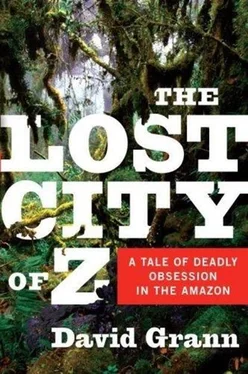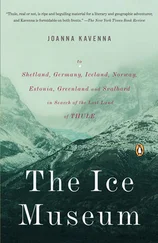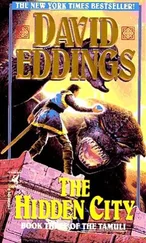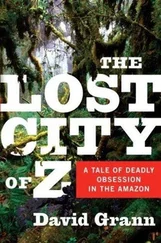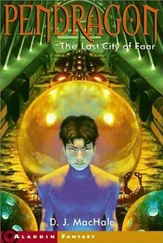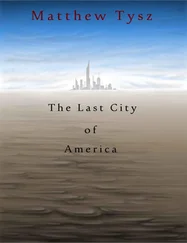The ship docked in Panama, where the construction of the canal- the most audacious attempt yet by man to tame nature-was under way, and the project gave Fawcett the first inkling of what he was about to encounter: stacked on the pier were dozens of coffins. Since the canal's excavation began, in 1881, more than twenty thousand laborers had died from malaria and yellow fever.
In Panama City, Fawcett boarded a ship for Peru, then proceeded by train up the glimmering, snowcapped Andes. When the train reached around twelve thousand feet, he switched to a boat and crossed Lake Titicaca (“How strange it is to see steamers in operation up here on the roof of the world!”), before squeezing into another jaw-rattling train, which took him across the plains to La Paz, the capital of Bolivia. There he waited more than a month for the government to provide a few thousand dollars, a sum far less than he had counted on, for provisions and travel expenses, his impatience provoking a row with local officials that had to be smoothed over by the British consul. Finally, on July 4, 1906, he and Chivers were ready to go. They loaded their mules with tea, preserved milk, Edwards' Desiccated Soup, sardines in tomato sauce, lemonade effervescing powder, and kola-nut biscuits, which, according to Hints to Travellers, produced “a marvelous effect in sustaining strength during exertion.” They also brought surveying instruments, rifles, rappelling ropes, machetes, hammocks, mosquito nets, collecting jars, fishing lines, a stereoscopic camera, a pan for sifting gold, and gifts such as beads for tribal encounters. A medical kit was stocked with gauze bandages; iodine for mosquito bites; permanganate of potash for cleaning vegetables or arrow wounds; a pencil knife for cutting out flesh poisoned from snakebites or gangrene; and opium. In his rucksack, Fawcett stuffed a copy of Hints to Travellers and his diary with his favorite poems to recite in the wilderness. One poem he often took was Rudyard Kipling's “The Explorer”:
“Something hidden. Go and find it. Go and look
behind the Ranges-
“Something lost behind the Ranges. Lost and waiting
for you. Go!”
Fawcett and Chivers went over the Andes and began their descent into the jungle. Fawcett, wearing gabardine breeches, leather boots, a Stetson, and a silk scarf wrapped around his neck-his standard explorer's uniform- made his way along the edges of cliffs, which fell away hun dreds of feet. Traveling in a blizzard, the men could see no more than a few yards ahead, though they heard rocks slipping from under the hooves of their pack animals and cascading into the gorges. It was hard to believe, as wind whipped around twenty-thousand-foot peaks, that they were on their way to the jungle. The altitude made them dizzy and nauseated. The animals staggered forward, out of breath, their noses bleeding from a lack of oxygen. Years later, moving through the same mountains, Fawcett would lose half a convoy of twenty-four mules. “A mule's load would often foul on jutting rocks, and knock [the animal] screaming over the precipices,” he wrote.
Occasionally, Fawcett and Chivers came upon a footbridge-strung together with palmetto slats and cables-that stretched more than a hundred yards over a gorge and swung wildly in the wind, like a shredded flag. The mules, too scared to pass, had to be blindfolded. After cajoling them across, the explorers picked their way downward around boulders and cliffs, spotting the first signs of vegetation-magnolias and stunted trees. By three thousand feet, where the heat was palpable, they encountered roots and vines creeping up the mountainside. Then Fawcett, drenched in sweat, peered into a valley and saw trees shaped like spiders and parachutes and clouds of smoke; waterways threading back and forth for thousands of miles; a jungle canopy so dark it appeared almost black-Amazonia.
Fawcett and Chivers eventually abandoned their pack animals for a raft made from sticks and twine and drifted into the Amazon frontier, a collection of Dodge-like towns with mocking names, such as Hope and Beautiful Village, that had recently been carved into the jungle by settlers who had fallen under the spell of oro negro- “black gold.” Christopher Columbus had first reported seeing Indians bouncing a ball made from the strange, sticky substance that bled from tropical trees, but it wasn't until 1896, when B. F. Goodrich manufactured the first automobile tires in the United States, that rubber madness consumed the Amazon, which held a virtual monopoly on the highest-quality latex. In 1912, Brazil alone exported more than thirty million dollars' worth of rubber, the equivalent today of nearly half a billion dollars. Rubber barons had transformed Ma-naus, along the Amazon River, into one of the gaudiest cities in the world. “No extravagance, however absurd, deterred them,” the historian Robin Furneaux wrote in The Amazon. “If one rubber baron bought a vast yacht, another would install a tame lion in his villa, and a third would water his horse on champagne.” And nothing was more extravagant than the opera house, with its Italian marble, Bohemian glass, gilded balconies, crystal chandeliers, Victorian murals, and a dome bathed in the colors of the national flag. Prefabricated in Europe and costing an estimated ten million dollars in taxpayers' money, the opera house was shipped in pieces more than a thousand miles up the Amazon River, where laborers were deployed around the clock to assemble it, working at night under Brazil's first electric lightbulbs. It didn't matter that almost no one from Manaus had heard of Puccini or that more than half the members of a visiting opera troupe eventually died of yellow fever. This was the apotheosis of the rubber boom.
The prospect of fortune had enticed thousands of illiterate workers into the wilderness, where they quickly became indebted to rubber barons who had provided them with transportation, food, and equipment on credit. Wearing a miner's lamp to help him see, a trapper would hack through jungle, toiling from sunrise to sundown, searching for rubber trees, then, upon his return, hungry and feverish, would spend hours hunched over a fire, inhaling toxic smoke as he cooked the latex over a spit until it coagulated. It often took weeks to produce a single rubber ball large enough to sell. And it was rarely enough to discharge his debt. Countless trappers died of starvation, dysentery, and other diseases. The Brazilian writer Eu-clides da Cunha called the system “the most criminal organization of labour ever devised.” He noted that the rubber trapper “actually comes to embody a gigantic contradiction: he is a man working to enslave himself!”
The first frontier town that Fawcett and Chivers came to was Rur-renabaque, in northwest Bolivia. Although it appeared in capital letters on Fawcett's map, it consisted of little more than a strip of mud with bamboo huts, and with vultures circling overhead. “My heart sank,” Fawcett wrote in his journals, “and I began to realize how truly primitive this river country was.”
The region was removed from any center of power or ruling authority. In 1872, Bolivia and Brazil had attempted to build a railroad through the jungle, but so many workers died from disease and from Indian attacks that the project became known as the Railroad of the Dead. It was said that one man died per tie. When Fawcett arrived, more than three decades later, the railway was under construction by a third firm; still, only five miles of track had been laid-or, as Fawcett put it, it ran “from ‘nowhere' to ‘nowhere.' ” Because the Amazon frontier was so isolated, it was governed by its own laws and, as one observer put it, made the American West seem by comparison “as proper as a prayer meeting.” When a British traveler passed through the region in 1911, he reported one resident telling him, “Government? What is that? We know no government here!” The area was a haven for bandits, fugitives, and fortune hunters who carried guns on each hip, lassoed jaguars out of boredom, and killed without hesitation.
Читать дальше
Конец ознакомительного отрывка
Купить книгу
